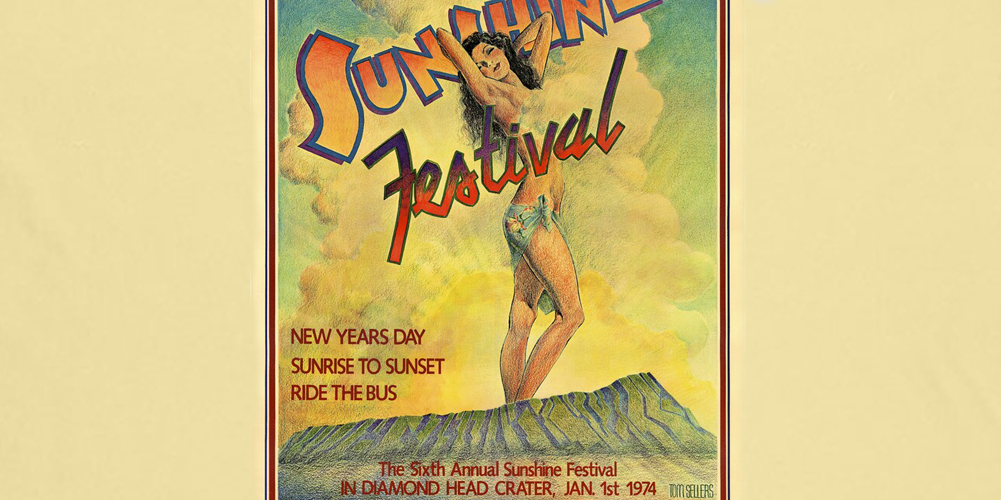The Crater was the location of several concerts in the 1960s and 1970s. First held on New Year's Day 1969, and often known as Hawaiian Woodstock, Diamond Head Crater Festivals, sometimes called Sunshine Festivals, were all-day music celebrations attracting up to 75,000 attendees for performances by various local acts and the Grateful Dead, Santana, America, Styx, Journey, War, and Tower of Power.
Men and women often walked around naked, some smoking marijuana at noon.
And given Hawaii's usual tolerance, only a handful were arrested. What was odd, however, was that the Diamond Head Crater Festivals went on for so many years before state officials and complaining neighbours finally halted the all-day music celebrations. Uncool spoilsports.
"It was a gathering of people, it wasn't just music - it was everything. We had arts and crafts, we had folk, rock and Hawaiian music," said Tom Moffatt, local music promoter, who helped organise the first crater festival on New Year's Day 1969.
"It would be a steady stream of people. The crowds were enormous. It was an all-day happening. And the problems were minimal."
The festivals were a sign of the 1960s’ far out times. Like others nationwide, Hawaii's people were grooving and experimenting with everything from drugs, to rock 'n' roll, to activist causes.
As the Star-Bulletin reported about the second festival in 1970:
"From their make-shift booths, youngsters sold cookies with zodiac and peace symbols on them, avocado sandwiches and apple juice.” Sounds great. Who doesn’t enjoy eating avocado sandwiches while freaking out to Santana?
"The crafts on display ranged from bamboo flutes, hippie clothing and artwork to water pipes, roach clips used to hold 'joints' and other items of the young drug culture."
The crater festivals, first produced to promote a new radio station, KPOI-FM, were held with minimal legal problems. The Hawaii National Guard ran the crater and had no objections.
There was no entrance fee, craft makers were free to set up shop, no cars were allowed in the crater, and all the food sold had to be vegetarian. How cool does that sound?
Moffatt, an island entertainment promoter for more than 35 years, said the crater festivals were the high point.
Eventually, however, the festivals fell out of favour with the state's uncool bureaucrats. They also became more commercial as several were held a year, not just on New Year's.
By 1979, a state-appointed citizen's task force asked the state Department of Land and Natural Resources to ban the festivals. They killed it by getting too big.
During that time and after, however, Hawaii was the scene for most of the big rock and entertainment acts in the country and of course, Carlos and Buddy Miles’ live album was recorded there on 1st January 1972.
"We had a lot of music come in - Grateful Dead, Byrds, the Rolling Stones came three times, just about everybody -- except the Beatles," Moffatt said.
By the mid-1970s, much of local music was reflecting growing disenchantment with government and official entities. They started holding festivals at other times, not just New Years Day and the popularity seemed to annoy people.
"(Protect Kahoolawe Ohana activist) George Helm was one of the first artists to combine nationalism and music," said John Berger, Star-Bulletin music critic. "I don't know how well he would have survived in today's musical climate. That sort of passion today is unfashionable."
Sidebar
Sunshine Festival - Diamond Crater, New Year's Day 1969-79




